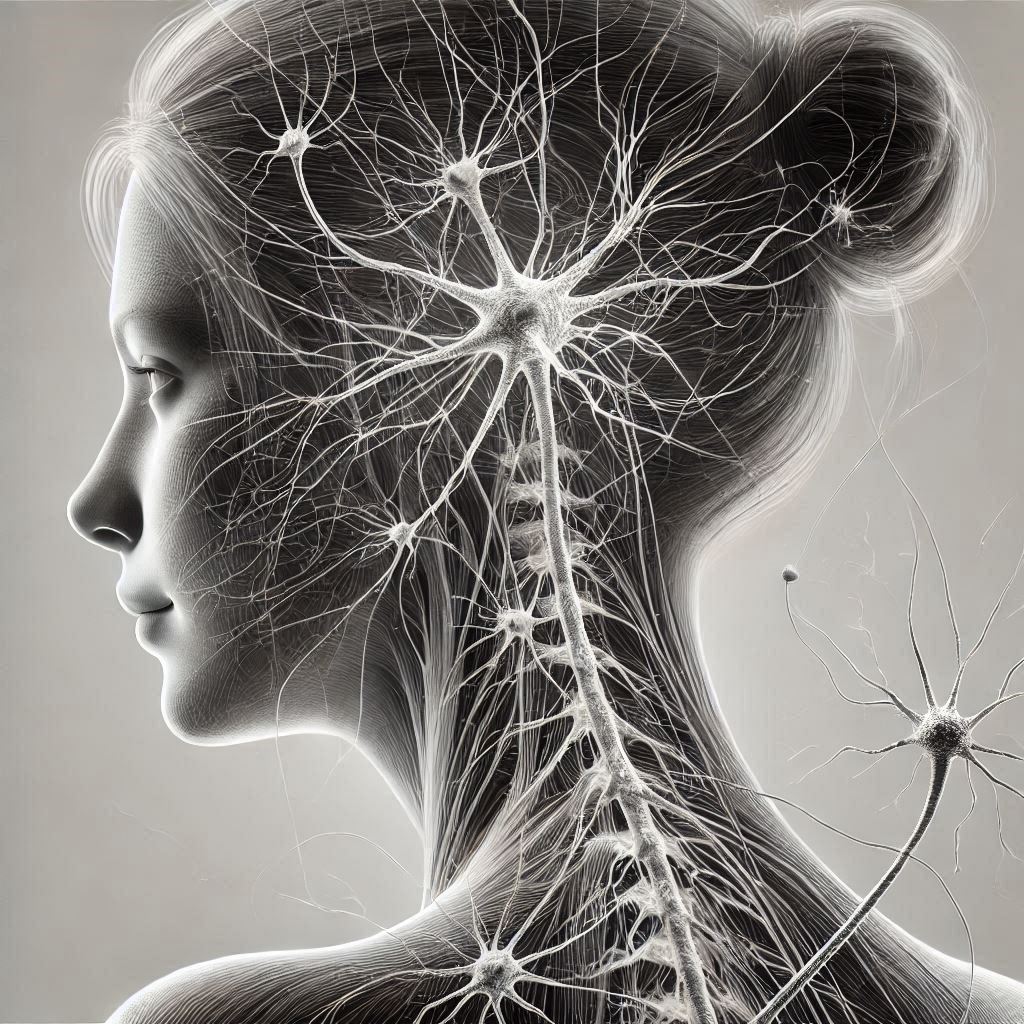Have you ever felt sudden, intense fear that triggers your heart to race, your body to sweat, and your muscles to tense up? These symptoms are tell-tale signs of the fight or flight response, a built-in survival mechanism that activates when we perceive danger. For those experiencing panic attacks, this response can be overwhelming, even in the absence of a real threat.
Understanding the fight or flight response is crucial for anyone dealing with panic attacks. It involves the autonomic nervous system, which automatically prompts the body to either face the peril head-on or escape from it. Recognizing how this response works not only helps demystify the experience but also provides essential insights into managing panic attacks more effectively. By grasping the physiological processes at play, sufferers can find better ways to cope and regain control over their lives.
Understanding the Fight or Flight Response
In times of stress or perceived danger, our bodies have an automatic reaction called the fight or flight response. Let’s uncover its origins and how it works inside our bodies.
Definition and Historical Context
The term “fight or flight” was first coined by Walter Cannon, a physiologist, in the early 20th century. Cannon described this response as a physiological reaction that occurs in the presence of something that is terrifying, either mentally or physically. This response is part of our evolutionary heritage and has been crucial for survival.
Historically, our ancestors needed a quick way to respond to life-threatening situations, such as encountering a predator. The fight or flight response gave them the necessary energy and focus to either confront the danger or run away to safety.
Physiological Mechanisms
The fight or flight response is controlled by the autonomic nervous system (ANS), particularly the sympathetic nervous system. When you encounter a perceived threat, several physiological changes take place:
- Adrenaline Release:
- The adrenal glands, located above your kidneys, release adrenaline and noradrenaline into the bloodstream. These hormones prepare your body for immediate action.
- Heart Rate and Blood Pressure Increase:
- Your heart rate speeds up, and blood pressure rises. This causes more oxygen and nutrients to be delivered to major muscles and essential organs, fueling either a fight or an escape.
- Respiratory Changes:
- Breathing becomes more rapid and shallow. This helps to increase oxygen intake, which is then used by muscles to enhance performance.
- Pupil Dilation:
- Pupils dilate to allow more light into the eyes, improving vision especially in low-light conditions.
- Muscle Contraction:
- Muscles tense up and become primed for immediate action, making them ready for quick movements.
- Blood Flow Redistribution:
- Blood flow is redirected away from non-essential functions like digestion and towards muscles and vital organs.
These changes happen so swiftly that we might not even notice them consciously. Yet, they prepare us to act swiftly and effectively in dangerous situations.
Understanding these mechanisms can help explain why panic attacks feel so overwhelming. The body’s natural response to danger kicks in even when there’s no real threat, causing intense physical sensations. By learning about these processes, you can better manage and respond to panic attacks when they occur.
Panic Attacks and the Fight or Flight Response
When a panic attack strikes, it can feel like an unstoppable wave crashing down on you. The overwhelming fear, anxiety, and physical symptoms all stem from the body’s fight or flight response, a primal reaction designed to protect us from danger. This section delves into what triggers this response during panic attacks and what symptoms to watch for.
Triggers of Panic Attacks
Panic attacks often occur suddenly and without warning. They can be triggered by various factors, many of which might not seem threatening on the surface. Here are some common triggers:
- Stress: High levels of stress from work, relationships, or financial problems can contribute to panic attacks.
- Phobias: Specific fears, such as fear of flying or heights, can trigger panic attacks.
- Health Concerns: Worry about health conditions or experiencing physical symptoms can lead to anxiety and panic.
- Social Situations: Events like public speaking, crowds, or social gatherings might trigger panic attacks for some.
- Traumatic Experiences: Past trauma, such as abuse or an accident, can resurface and cause panic.
- Caffeine and Medication: Certain substances, including caffeine and some medications, can trigger anxiety and panic symptoms.
Understanding what triggers a panic attack is essential for managing and possibly preventing future episodes. By recognizing these triggers, individuals can take steps to reduce their impact or avoid them altogether.
Symptoms and Sensations
Panic attacks manifest through a range of physical and emotional symptoms, often mimicking other severe health conditions. These symptoms are the result of the fight or flight response and include:
- Increased Heart Rate: Your heart begins to pound or race as if you’ve just run a marathon. This is your body’s way of preparing to face a threat.
- Shortness of Breath: Breathing becomes rapid and shallow, similar to being out of breath after a sprint. This ensures more oxygen reaches your muscles.
- Trembling or Shaking: Your muscles may shake uncontrollably, as they are tensed and ready to spring into action.
- Sweating: You might start to sweat profusely, since the body is working hard and needs to cool down.
- Chest Pain: The tightness or pain in your chest can mimic a heart attack, a common source of panic during an episode.
- Numbness or Tingling: Hands, feet, or face might feel numb or tingly, a result of blood flow changes.
- Dizziness or Lightheadedness: Feeling faint or like the room is spinning can be incredibly disorienting.
These sensations stem from the physiological changes in the body’s preparation to fight or flee. The body’s sympathetic nervous system ramps up, releasing hormones like adrenaline into the bloodstream. This flood of adrenaline causes the intense physical reactions associated with panic attacks.
Recognizing these symptoms can help individuals understand that what they’re experiencing, while extremely uncomfortable, is not life-threatening. Knowledge and awareness are the first steps to managing and overcoming panic attacks.
Psychological Implications of the Fight or Flight Response
When panic attacks strike, they bring not only physical symptoms but also profound psychological effects. This section explores how the fight or flight response impacts our cognition and emotions during these episodes.
Cognitive Effects
The cognitive impact of the fight or flight response is significant, especially during a panic attack. Imagine your brain firing off alarms, convincing you that danger is imminent even if it’s not visible. Some common cognitive effects include:
- Hypervigilance:
- Your senses become extremely alert, constantly scanning for any signs of threat. This heightened state of awareness can make you feel jumpy and excessively cautious.
- Racing Thoughts:
- Thoughts can speed up, making it difficult to focus. Your mind might jump from one worry to another, amplifying feelings of fear and confusion.
- Difficulty in Rational Thinking:
- Panic makes logical thinking nearly impossible. Decision-making becomes clouded, and everyday problems can suddenly seem insurmountable.
These cognitive effects stem from the body’s misguided attempt to protect you from an invisible threat. Just like a smoke alarm that goes off when there’s no fire, your brain is reacting to false danger signals. This overload can make it challenging to distinguish between real and perceived threats.
Emotional Consequences
The emotional toll of repeated panic attacks and chronic activation of the fight or flight response is also profound. The frequent assault of intense fear and anxiety can lead to lasting emotional repercussions:
- Development of Anxiety Disorders:
- Constantly feeling on edge can cause chronic anxiety. Generalized Anxiety Disorder (GAD), Social Anxiety Disorder, or Post-Traumatic Stress Disorder (PTSD) may develop over time.
- Increased Fear of Future Attacks:
- After experiencing a panic attack, the fear of having another one can become debilitating. This is often referred to as “fear of fear.” It can lead to avoidance behaviors, restricting activities to prevent another episode.
- Erosion of Self-Confidence:
- Frequent panic attacks can chip away at your self-esteem. The loss of control experienced during an attack might make you doubt your ability to handle everyday situations.
Understanding these emotional consequences is crucial. They highlight the importance of seeking help and employing strategies to manage the fight or flight response. It’s like carrying an umbrella on a cloudy day—preparedness gives you a sense of control and peace of mind.
By recognizing the cognitive and emotional effects of the fight or flight response, we can better appreciate the challenges faced by those experiencing panic attacks. This understanding is the first step toward developing effective coping mechanisms and supporting those in need.
Managing and Mitigating Panic Attacks
Panic attacks can be incredibly disruptive and frightening. Knowing how to manage and mitigate them can help alleviate these feelings and regain a sense of control. This section explores various strategies that can soothe the mind and body, addressing both the physiological and psychological aspects of panic attacks.
Behavioral Techniques
Behavioral techniques are practical methods to manage the physical symptoms of panic attacks. These techniques focus on calming the body’s fight or flight response and include:
- Deep Breathing:
- Slow, controlled breathing can reduce the intensity of a panic attack. Try to inhale deeply through the nose, allowing your abdomen to expand, and exhale slowly through the mouth. This can help slow the heart rate and relax the muscles.
- Grounding Exercises:
- Grounding involves focusing on the present moment to distance yourself from panic. Techniques can range from noticing five things you see, four things you can touch, three things you hear, two things you can smell, and one thing you can taste. This method can distract your mind from the anxiety you’re feeling.
- Progressive Muscle Relaxation (PMR):
- PMR consists of tensing and then slowly relaxing different muscle groups in the body. Starting from the toes and working up to the head can help relieve physical tension, promoting overall relaxation.
Using these methods can significantly relieve the physiological symptoms, offering immediate respite during a panic attack.
Cognitive-Behavioral Therapy (CBT)
Cognitive-Behavioral Therapy (CBT) is highly effective in treating panic attacks. This therapeutic approach tackles the thoughts and behaviors contributing to the panic cycle. Here’s how it works:
- Identifying Negative Thoughts:
- CBT helps individuals recognize irrational and catastrophic thoughts often present during panic attacks. By understanding these thoughts are unfounded, individuals can begin to challenge them.
- Behavior Modification:
- Through CBT, patients learn to face their fears in a controlled and gradual manner. Techniques such as exposure therapy enable individuals to confront situations that trigger panic while practicing calming strategies.
- Developing Coping Strategies:
- CBT equips individuals with tools to manage anxiety proactively. These strategies can include thought-stopping, where a person mentally commands themselves to stop anxious thoughts, and replacing them with calmer, more rational alternatives.
By addressing both cognitive and behavioral aspects, CBT provides comprehensive relief and equips individuals with long-term skills to handle panic attacks.
Medication Options
Medication can be a critical component in managing panic attacks, especially when other strategies are insufficient. Here are common medications used:
- Benzodiazepines:
- Medications like Xanax (alprazolam) and Valium (diazepam) can provide quick relief by calming the nervous system. However, they are often prescribed for short-term use due to their potential for dependency.
- Selective Serotonin Reuptake Inhibitors (SSRIs):
- SSRIs, including drugs like Zoloft (sertraline) and Prozac (fluoxetine), are typically used for long-term management. They help balance serotonin levels, which can stabilize mood and reduce the frequency of panic attacks.
- Tricyclic Antidepressants:
- These are sometimes prescribed if SSRIs are ineffective. They work similarly by affecting neurotransmitters related to mood and anxiety.
Consultation with a healthcare provider is essential to determine the best medication plan. Medication can effectively dampen the fight or flight response, reducing the severity and frequency of panic attacks.
By combining behavioral techniques, cognitive therapy, and appropriate medication, managing and mitigating panic attacks is achievable. These strategies provide a comprehensive approach, addressing both the mind and body, helping individuals regain control and reduce the impact of panic in their daily lives.
Long-term Strategies for Reducing the Fight or Flight Response
Finding ways to reduce the fight or flight response in the long-term is crucial for those who frequently experience panic attacks. By incorporating some consistent habits and practices into your daily routine, you can begin to lessen the frequency and intensity of these anxiety-driven episodes.
Lifestyle Modifications
Making certain lifestyle changes can have a profound impact on your overall well-being and help reduce the fight or flight response. Here are some key modifications to consider:
- Regular Exercise:
- Engaging in regular physical activity can lower stress levels and boost your mood. Exercise helps in reducing the levels of adrenaline and cortisol, the stress hormones that trigger the fight or flight response.
- Aim for at least 30 minutes of moderate exercise, such as walking, swimming, or cycling, most days of the week.
- Balanced Diet:
- Maintaining a healthy diet plays a vital role in managing stress and anxiety. Foods rich in vitamins, minerals, and antioxidants nourish your body and support brain health.
- Include plenty of fruits, vegetables, whole grains, lean proteins, and healthy fats in your diet. Avoid excessive caffeine and sugar, which can exacerbate anxiety.
- Adequate Sleep:
- Quality sleep is essential for restoring your body and mind. Lack of sleep can increase stress hormones and reduce your ability to handle stress.
- Establish a regular sleep routine by going to bed and waking up at the same time every day. Create a calming nighttime routine to signal your body that it’s time to unwind.
These lifestyle modifications act like the scaffolding, providing a strong foundation to support your mental and physical health.
Mindfulness and Stress Reduction
Mindfulness and stress reduction techniques are beneficial tools for managing the fight or flight response. These practices encourage awareness and relaxation, helping you feel more grounded and less prone to panic attacks.
- Meditation:
- Regular meditation can rewire your brain to respond more calmly to stress. It involves focusing your mind on a particular object, thought, or activity to train attention and awareness.
- Start with just a few minutes a day, gradually increasing the duration as you become more comfortable with the practice.
- Yoga:
- Yoga combines physical movement, breath control, and meditation, promoting overall relaxation and stress relief.
- Practicing yoga regularly can help lower stress hormone levels, decrease muscle tension, and increase feelings of calmness.
- Breathing Exercises:
- Practicing deep breathing exercises can help calm your nervous system on the spot. Techniques like diaphragmatic breathing or the 4-7-8 method (inhale for 4 seconds, hold for 7, exhale for 8) can reduce immediate anxiety.
- Progressive Muscle Relaxation:
- This technique involves tensing and then slowly relaxing each muscle group in your body. It can help reduce physical tension and promote a sense of tranquility.
Incorporating these practices into your routine is like installing an internal alarm system that signals your body and mind to relax when anxiety starts to creep in.
Building Resilience
Building emotional and psychological resilience can enhance your ability to cope with stress and reduce the likelihood of triggering the fight or flight response.
- Positive Relationships:
- Surround yourself with supportive friends and family. Positive social interactions can protect against stress and provide a buffer during challenging times.
- Don’t hesitate to reach out and talk about your feelings and experiences. Sharing can lighten the emotional load and provide new perspectives.
- Cognitive Reframing:
- This involves changing how you think about and respond to stressors. By reframing negative thoughts into positive ones, you can reduce your anxiety levels.
- Practice looking at situations from different angles and challenge irrational thoughts with more balanced and rational views.
- Pursuing Hobbies and Interests:
- Engaging in activities that you enjoy can provide a sense of accomplishment and joy. It acts as a distraction from stress and contributes positively to your mental well-being.
- Whether it’s painting, reading, gardening, or any other hobby, make time for it regularly.
- Goal Setting:
- Setting small, attainable goals can maintain your motivation and focus. Achieving these goals, no matter how minor, helps build confidence and a sense of control.
Building resilience is like strengthening the muscles of your emotional body; it helps you bounce back faster from stress and keeps anxiety at bay.
By integrating these long-term strategies into your lifestyle, mindfulness practice, and resilience-building activities, you can reduce the sensitivity of your fight or flight response and better manage panic attacks. Concentrate on making gradual, sustainable changes for lasting improvement in your overall mental health.
Conclusion
Effectively managing the fight or flight response is essential for those experiencing panic attacks to enhance their quality of life. Understanding the physiology behind this response provides clarity and reduces the fear of unknown bodily reactions. Recognizing triggers and symptoms allows for proactive coping strategies. Combining behavioral techniques, cognitive-behavioral therapy, and, when necessary, medication offers a comprehensive approach for managing panic. Long-term lifestyle modifications, mindfulness practices, and resilience-building further support reducing the frequency and intensity of panic attacks. Empowering individuals with these tools can significantly improve their mental well-being and overall life experience.








